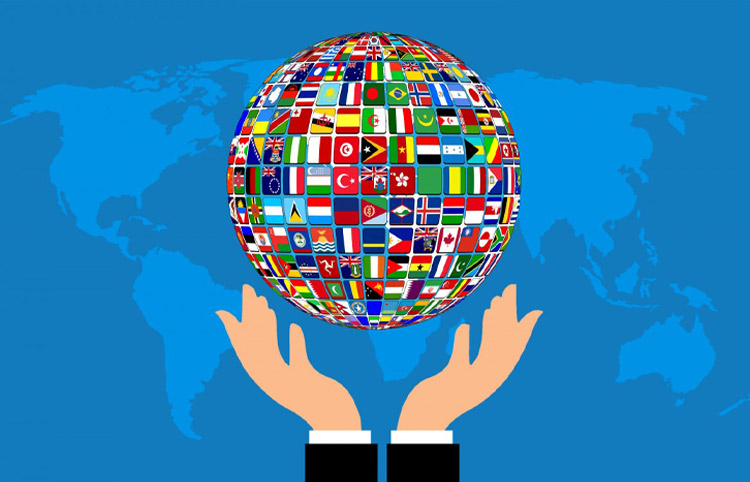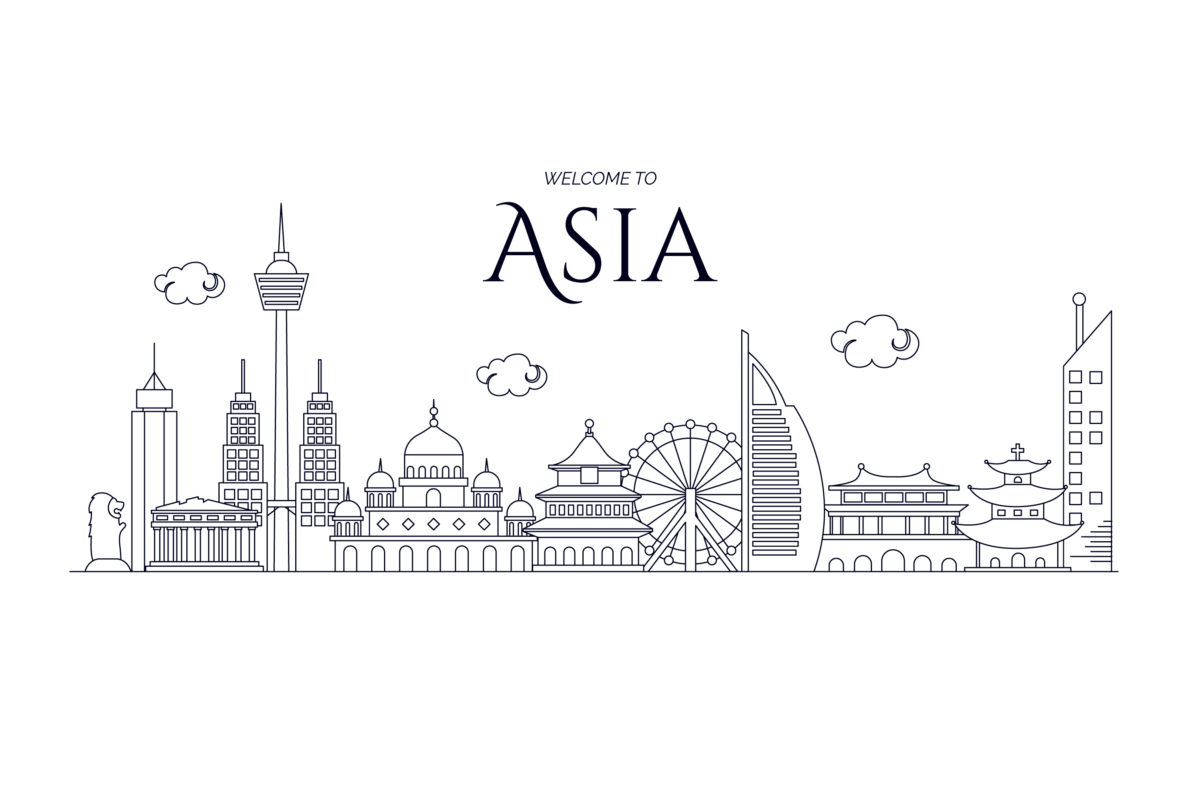- a range of techniques, including promotions, strap-lines and advertising are used to persuade us to buy (Read Article)
- peer pressure influences conformity to consumer norms
- role models and celebrities are used to endorse products
- some consumers resist brand name marketing strategies
- many consumers assume that brand names offer the best products and service and, therefore, remain loyal to the brand (Read Article)
- many see brand names as a reflection of lifestyle choices.
- Study on Car Buyers
Category: Globalisation
How far is it possible for us to maintain a sense of identity in the face of increasing globalisation?
- towns and cities across the world have identical shops with identical content
- trans-national corporations have the financial power to influence governments and ensure they penetrate local markets
- the power of the strongest economies makes it difficult for smaller countries to compete on their own
- national identity is preserved through culture, sport and language
- it is difficult to evade international legal requirements
- individuals choices reflect their own styles and tastes.
- this is an age of multiple identities
In what ways does a country both benefit and suffer from where it is situated?
A country’s geographical site is something that is of great significance, however, it can never be changed. A country has no way of deciding where she is located. Depending on beliefs, location is decided by a supreme being or sheer luck. Location can be an asset or a liability to a country depending on the exact nature of the location. Some countries have been submerged in water, others have been mired in war for years and some are located strategically along with trade travel hub. However, given the level of technology today, coupled with factors such as good governance, it is possible to mitigate the effects of poor location in certain situations.
A country with a good location would be a country that is not landlocked, is accessible to good trade routes and natural resources.
A country can gain from her location if she is in close proximity with other countries and they cooperate. This being the case helps to encourage trade and security cooperation which are two important factors that help to build and safeguard a country. The Association of Southeast Asian Nations(ASEAN) and the European Union(EU) are international organizations that carry out the gains mentioned earlier. To illustrate, to bolster security measures, member countries of ASEAN signed the Treaty of Amity and Cooperation in Southeast Asia, which spelt out the basic principles for their relations with one another and the conduct of the association’s programme for cooperation. In a similar manner, to maximise their influence on the international scene, on trade matters, EU members speak with one voice. In addition, EU members have removed all tariffs on trade when trading with fellow members, in order to boost trade. These examples demonstrate how countries can benefit from their location if they work hand in hand with the countries that are in close proximity.
However, just as close proximity can help a country, it can also bring about the harm such as increased tensions and even conflict. Such is the case of the boundary disputes between India and China. India and China have yet to resolve their dispute over large land areas such as Aksai Chin, a territory that China seized during the Sino-Indian War in 1962. In addition, close proximity due to the location of countries can bring about conflict over natural resources that are shared. A more recent example is the building of as many as 55 dams along the course of the Mekong river flowing through Indochina. This is especially damaging as the river meanders from China through Myanmar, Laos, Thailand and Cambodia. Thus, the lives of millions of people, not only those in Indochina, depend on it. This problem which will not be corrected in the near future has led to an increase in social and political tension between the lower Mekong countries and those in Indochina. This is an apt example of how close proximity arising from countries’ location can result in the sharing of natural resources and the subsequent increase in problems that the countries have to face.
Moving on, a country’s location determines the climate that the country experiences and the magnitude and frequency of natural disasters. Such factors are vital in determining if a country gains or loses. An example of a country that has prospered due to its good climate is Brazil. Climate suitable for agriculture has enabled Brazil’s agriculture sector to grow steadily over the past decade, positioning itself among the most dynamic sectors of the economy. Certainly, the growth is also fueled by the increase in the use of high technologies such as software to maximise the use of fertilizers and pesticides. However, the climate still plays an irreplaceable role in the agriculture sector. This is because, without a suitable climate, crops cannot prosper or survive even if large amounts of fertilizers are used. Hence this case shows how a country can gain from her good climate due to her good location.
In contrast, a country can suffer due to the geography and climate of the country. Problems include natural disasters or islands becoming submerged underwater and these problems can arise due to the location of the country. As the climate continues to warm, entire islands are sinking below rising waters due to melting glaciers. At least 18 islands have been submerged underwater. This problem is a result of the location of these islands. It is because these islands are located in low lying areas which is why the change in climate has resulted in them being submerged. This has brought about harm as whole communities have to be relocated, bringing about the advent of climate refugees. In addition, this has also caused much land to be no longer suitable for agriculture. This example shows the magnitude and how the location of a country can bring harm and loss.
On a separate note, it is important to note that while the location is significant, in this day and age, it is possible for good governance coupled with technology to mitigate the effects of a bad location. Landlocked countries such as Switzerland and San Marino are among the most stable and prosperous countries in the world. This shows that the most unfavourable geographical locations can be made prosperous by good policy. Apart from this, technology can also make geography irrelevant. Technology has enhanced communication and thus shrunk distances. Bangalore has become the software capital of India, with Hyderabad a close second. Both are land-locked, but satellite communications enable them to link up with cities anywhere in the world at low cost.
Location remains an important determinant of whether a country gains or loses. However, it has been shown that technology with good governance can conquer location. Hence while the location is vital, perhaps the gains and losses a country experiences also depends on the resolve of the people to use things available to their advantage and make their country prosperous.
Do you agree that the problems of poverty can only get worse in the current climate?
Many people have thought that globalization will bring about the end of poverty, as countries and people gets richer. While this is certainly true for many countries, such as Singapore, South Korea and Taiwan, there are many countries that are still in poverty even though we are currently still in the age of globalization. In fact, I think that the problems faced by those in poverty will escalate further, as the poorer countries are manipulated by the richer countries, the current global financial crisis that affects everyone and the widening relative income gap between citizens in a country. In this essay, I would be focusing more on poverty in poor countries.
The problems of poverty can only get worse in the current climate because of the manipulation of the poorer countries by the richer countries. With globalization, many countries become wealthier due to the improvements brought about by technological advances and trading. The rich countries have outsourced their labour to overseas countries to reduce their cost of production and hence increase their profits. Some of these countries which the rich countries have outsourced for labour are China, India and also the continent of Africa. The people often worked long and hard, and they are paid meagre wages. Children exploitation occurs as a result of parents roping in their children to help to contribute to the family income. Child labour is hence common in India and Africa. Instead of being educated, these children are forced to work and they are denied the opportunities to improve their quality of lives as they do possess the academic qualifications to pursue a suitable career. This causes a never-ending cycle of poverty as they are unable to break out of their poverty. In addition, many rich countries have exported their goods to these poor countries. Many times, the goods are heavily subsidized by their government, and therefore the rich countries are able to export their goods at a low price to other countries. It would seem beneficial to those foreigners, as they are able to purchase cheap goods. However, the producers of the same goods in those poor countries would suffer as they are unable to compete with the cheap imports from the richer countries, and this would result in a huge amount of losses, and hence aggravate the condition of their poverty.
Besides being manipulated by richer countries, there may be some countries that are unwilling to embrace globalization and technology. These countries may feel that globalization and those technological advances are harmful to their society, and they would prefer to continue with their own way of life than to accept the changes brought about by globalization. In my opinion, countries that are unwilling to accept globalization could be because they fear that with globalization, it would become “Americanization” and their countries would lose their own identity. It is not surprising to see that countries envision globalization to be “Americanization” as America has been at the front line of technological advancements. Fearing of losing their own identity, these countries may end up worsening the problems of poverty in their countries because they would lose out to the other countries which have accepted and embraced globalization as part of their way of lives. With globalization, communication and transport have become faster, goods of higher quality are being produced at larger amounts and in shorter times, and hence trade volumes between countries increase tremendously. Without globalization, countries’ efficiency and output would be of low quality and takes a long time to produce. This will then worsen the problems of poverty in those countries as the people’s quality of lives did not improve at all.
This situation would only occur if countries are unwilling to adopt globalization into their lives. However, in this present time, it is rather unlikely that any country will fully reject globalization altogether. The only difference is that the extent of globalization varies from countries to countries. The world is much more interconnected now with each other; via the internet and the trades with each other, and countries affect each other in more than one way. If poor countries open up their economies more and specialize in what they have a comparative advantage in, these countries welfare will improve for the better. It might not happen in the short run, but in the long run, there will be some rewards for these countries, in terms of skills, labour or revenue gained. Therefore it is not entirely possible that the problems of poverty can only get worse in the current climate, as long as people are willing to see things from a different perspective and change their lifestyles. There are also many foreign aids from other countries to poor countries in present-day lately. These aids usually arrive with the aim of liberating children from labour and grant them education opportunities, providing the people with basic necessities and also for the adults’ chances to find jobs. Hence, there might be a chance that the problems of poverty can improve in the present climate.
Poverty can also be defined as relative poverty when individuals within a society are compared to each other, and relative poverty usually refers to citizens of the lower-end of that society’s income group. In this current climate, with the global financial crisis, the recession has hit many countries, including Japan and Singapore. Many individuals become unemployed and hence add to the problems of relative poverty in their society. In addition to the benefits, globalization has also brought about many problems as well. This is due to the fact that mostly those who are able to afford technological advances are those who truly benefit, while those who are unable to do so are crowded out. Hence, the income gap between the relatively richer and the relatively poorer widens. If this trend continues, there would be more people who will be relatively poorer and this increase the problems of poverty.
Protected: International cooperation is necessary in this globalised world. Do you agree?
Protected: ‘International cooperation has no place in this competitive world.’ Discuss.
To what extent does the migration of people have a positive effect?
While this is a good essay, by today’s standards, the introduction and conclusion are excessively long.
Migration of people has become a collective norm, such that it is an ascendant characteristic of the contemporary society thus regulating international and cross-provincial migration is a prime concern on the policy agendas of developed and Third World states. The term “migration of people” refers to the movement of individuals such as refugees and economic migrants. This phenomenon is chiefly pertinent at present, taking into account the projection of unceasing global and regional migration animated by ageing of First World populations, mounting labour shortages in numerous developed states and urban provinces, as well as chronic disparities in income and standard of living across industrialized and developing civilizations. The modern unparalleled degree of migration incites substantial demographic, ethnical and socio-cultural reforms in many communities. Camps are divided on a myriad of issues and the aftermaths of resettlement. Consequently, there is an emerging consensus that migration of people, supposing appropriate policy measures are implemented, may engender crucial merits for expatriates, host nations and motherlands. However, given that immigration can be perceived as a double-edged sword, it does not emphatically imply propitious outcomes. Hence, migration of people has a positive effect to a large extent.
In a gradually more diverse world, where migration is repeatedly discerned as a menace to national and provincial identities in addition to social cohesion, it is fundamental to stress the positive stimulus migration initiates in host states and regions, with regard to workforce, creation of affluence, ubiquitous poverty decline, innovation and fecundity. On one hand, there is proliferating belief that immigration precipitates growth. Migration tends to boost employment in host societies, draw an influx of foreign capital and investment, beget a cosmopolis, and heighten the capacity for modernism. Several economists claim that the import of cheap labour has trifling bearing on incomes and trade openings for domestic workers since migrant workers are frequently employed in low-wage unskilled practices for which there is a lack of local supply of manpower. Therefore, the migration of people is beneficial for the receipt states and districts.
On the other hand, sceptics assert that immigration would intensify public welfare strain as well as hostility between the migrant population and the locals in host communities. One Centre of Immigration Studies (CIS) repudiated the advantages of immigration, stating the case of Mexican migrants in the United States. The study alleged that Mexican immigrants have spawned a five percent regression in wages for the poorest ten percent of the American households. Furthermore, impecunious immigrants exploit social services at twice the rate of native Americans. Thus the detractors argue that migration is detrimental. Despite the element of legitimacy in their approach of analysis, I consider their deduction to be too sweepingly pessimistic. The Centre for Economic Policy Research (CEPR) elucidated findings such as the majority of immigration trends illustrated modest or zero influence on employment and earnings of residents. Although economic theory suggests that in the short run, and on the assumption that the skill composition of the immigrant inflow diverges from that of locals, migration may be adverse, the net effects of migration are generally positive over the protracted period.
Concurrently, Third World countries and rural provinces may experience the “brain drain” phenomenon which describes the loss of trained and educated individuals to emigration. According to the International Organization for Migration (IOM), there are more African scientists and engineers in practice in the United States than in their homeland. The United Nations Population Fund, 2010 State of the World Population report determined that Africa merely retains 1.3 percent of the globe’s health care practitioners despite having over a quarter of tuberculosis cases worldwide. Moreover, Chinese farms are observing a scarcity of labour as rural-urban immigration level rise to a prodigious high. With escalating reliance on agricultural imports, China’s food security is increasingly threatened. Nevertheless, source states also reap benefits through remittances, both cash and societal, in the form of declines in fertility, child mortality rates, higher school enrolment rates and the empowerment of women. The exodus of highly skilled workers should be reflected as a symptom instead of a rationale behind failing public systems in those regions. Therefore, migration is advantageous on the whole, for the sending societies.
It is temerarious to form elementary assessments about the benefits of migrant flows from developing to developed states, and from rural to urban provinces. For poverty-stricken countries, the migration of a sizeable fraction of their talents imperils those remaining behind. The underlying reality is that communities necessitate human capital to ensure progress, assemble institutions as well as implement guiding principles which are the strategic pillars of sustained development. The central factors of intercontinental and domestic migration lie in the inequalities which exist in stages of development. Since the significant magnitude, doggedness and flagrancy of the gaps are likely to reinforce the pressures for migration in the imminent future, this migration trend is probable to increase. Given the considerable and multifaceted aftermaths of migration, the global community should seek a more impartial recruitment of less skilled, greater emphasis on provisional employment with incentives to return, and accent on remedying the institutional malfunctions which motivate talents to leave. With these rudiments in place, migration would be more advantageous for development.
Dominance of Asia is inevitable. Discuss.
A ten year old essay that still reads fresh!
Minister Mentor Lee Kuan Yew gave a piece of his advice to the US administration when he was there to receive the Lifetime Achievement Award in Washington. He opined that if the US does not recognize that the Asia-Pacific is where the economic center is going to be, US would lose its influence worldwide in decades to come. Once considered a poor continent from the devastations of the World Wars with little or no influence (with the exception for Japan) on the global economy, Asia is now seen as playing a leading role on the global stage. The dominance of Asia in decades to come will be more defined as a shift in new economic global order sets in.
Intrinsic integration of economies has opened up markets in Asia which has widely benefitted it. Compared to the developed continents of Europe and North America, Asia is largely still a developing continent which strangely is working in her favour. The opening of emerging economies like Thailand, Vietnam and the two economic superpowers India and China has seen low wages being offered partly due to an abundant supply of labour and partly due to lower skills of these workers. As a result, these had led to many multinational corporations to outsource production of their goods in Asia to take advantage of the low-cost of production so as to be able to retain global competitiveness. China known as the world’s largest manufacturer has seen surge in demand for its labour that led to its economy to be overheated. India too is known to export IT services to countries due to her level of competency in that field, many Indian expatriates have been working in Silicon Valley, making up 30 per cent of the workforce. Due to greater demand from corporations it too allowed Asia to grow at an accelerating for the world to straighten up and recognize the rising dominance of Asia due to her economic prowess.
A downside to this though is that as Asia expands at an accelerating pace internal problems have become more poignant. In large parts of Asia, rural developments still persist. People in these areas tend to be illiterate and still engage in the cradle to grave employment – farming. They do not benefit from economic growth that other sectors do arising to the microeconomic problem of widening income inequality. China’s Gini coefficient is relatively high which signifies that if Asian government do not address the bipolarity in developments within its boundaries, the dominance of Asia may just become a passing fad.
On the entertainment area, Asian movies have been making its mark globally. Mention Bollywood and immediately one would conjure up an image of constant song and dance that revolves around a tree. Several Asian movies have received international awards such as Mother from South Korea, My Magic from Singapore; the Japanese movie The Departures won an Oscar award for best foreign film. Cross-border collaborations are rising as well. Westerners see Asia rich in culture and its diversity appealing as more Hollywood movies direct their movies in Asia. Even remakes of Asian films such as “My Sassy Girl” and “Departed” illustrate the growing influence of the Asian entertainment industry.
The myriad of traditions able to blend together in a melting point allows many Asian films to the created derived from the cross-cultural experiences in Asia which is its triumph card in the international market. Models too known for their “exotic looks” are making waves on in the fashion industry. Its dominance yet is not obvious but in decades to come, its rippling of waves would turn to full tides.
Education – a vital, necessary tool to equip are with the necessary knowledge to be able to command a higher wage for skills learnt to provide a comfortable life for one has seen Asian university rankings rise in the annual QS list. The desire to be taken seriously by their competitors have witnessed an immense hunger in Asia to strive for the best or so to speak. Asian education system is known for its rigours and is clearly evident in the number of international maths and science Olympiads Asians win. Compared to the US education system, where school days follow the 19th century agarian calendar which has become irrelevant in today’s world, pale in comparison to the Asian school system, Japan has 242 school days, South Korea 220 and Singapore 200. This has provided Asians a competitive edge in consistent production of highly skilled workers. This, coupled with low-cost labour, creates an ideal investment environment. Academics aside, athletes too are becoming serious competitors in international competitions. It is no wonder then that Asia will lead with an army of well educated scholars that can shape policy and industry.
However, a crucial limiting reagent that can potentially undermine the dominance of Asia is that it is the most vulnerable continent to climate changes that can adversely impede the growth of Asia. The Java coastline of Indonesia has the world’s most fault lines, making it most exposed to earthquakes. To recent surge of fury of mother nature all occurred in Asia. From typhoons rampant in Philippines to Taiwan to Japan, it creates havoc, destroys buildings and more importantly creates casualties. The economic aid into reconstruction from the damage is huge. As Asia constantly experiences such calamities, resources have to be diverted to aid devastated neighbours. This would hinder the capacity Asia has to grow. It is of utmost importance and only circumspect that Asia weaves a social fabric to truly become a domineering force. Lack of aid in times of need would result in a fallout as a whole. Increasing dominance will be diminishing in decades to come instead.
Boasting multi-ethnic groups, multi-talented individuals and large domestic market, Asia is a force to be reckoned with. Its buzzing nightlife and rising social entrepreneurs has sent a message to the world. It is said to be the makeshift of new economic world order. These are transparent signs of rising dominance but to see it turn to actuality, only time will tell.






